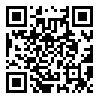目的 基于网络药理学与分子对接技术探讨黄芪⁃山药药对治疗急性肺损伤(ALI)的作用机制。方法 通过中药系统药理学数据库与分析平台获取黄芪、山药的活性成分及对应作用靶点,通过GeneCards®数据库获得ALI相关靶点,将上述靶点取交集(交集靶点)。应用Cytoscape软件构建“药物⁃成分⁃靶点⁃疾病”网络,筛选黄芪⁃山药药对的核心活性成分。使用STRING平台构建交集靶点蛋白⁃蛋白相互作用网络,筛选黄芪⁃山药药对治疗ALI的核心靶点。应用R语言软件进行交集靶点基因本体论功能富集分析和京都基因与基因组百科全书通路富集分析。采用Schrödinger软件对核心活性成分和核心靶点蛋白进行分子对接。结果 共筛选得到16种黄芪活性成分和12种山药活性成分,对应作用靶点179个,ALI相关靶点8 905个,交集靶点170个。黄芪⁃山药药对的核心活性成分为槲皮素、山柰酚、7⁃O⁃甲基异戊醇、豆甾醇、芒柄花黄素和异鼠李素。黄芪⁃山药药对治疗ALI的核心靶点为丝氨酸/苏氨酸蛋白激酶(AKT)1、前列腺素内过氧化物合酶2(PTGS2)、肿瘤坏死因子(TNF)、肿瘤蛋白p53(TP53)、白细胞介素(IL)⁃6和IL⁃1β。交集靶点涉及对营养水平的反应、对外源性刺激的反应和对脂多糖的反应等生物过程,涉及膜筏、膜微区和突触膜等细胞组分,涉及DNA⁃结合转录因子结合、DNA⁃结合转录激活因子活性等分子功能,交集靶点主要富集在磷脂酰肌醇3⁃激酶(PI3K)/AKT、IL⁃17、TNF和缺氧诱导因子1(HIF⁃1)等信号通路。分子对接结果显示,黄芪⁃山药药对的核心活性成分与核心靶点蛋白PTGS2、IL⁃6和AKT1表现出较好的结合活性。结论 黄芪⁃山药药对的槲皮素、山柰酚、7⁃O⁃甲基异磺酸醇、豆甾醇、芒柄花黄素和异鼠李素等核心活性成分,可能通过作用于PTGS2、IL⁃6和AKT1等核心靶点,调控PI3K/AKT、IL⁃17、TNF和HIF⁃1等信号通路,发挥治疗ALI的作用。
广西医学 页码:91-99
作者机构:刘超,硕士,研究方向为急性肺损伤相关机制和治疗。
基金信息:广西医疗卫生适宜技术开发与推广应用项目(S2019043);广西中医药适宜技术开发与推广项目(GZSY2024062)
- 中文简介
- 英文简介
- 参考文献
Objective To explore the mechanism of Hedysarum multijugum⁃Rhizoma dioscoreae herb pair for the treatment of acute lung injury (ALI) based on network pharmacology and molecular docking technique. Methods Active components and corresponding effect targets of Hedysarum multijugum and Rhizoma dioscoreae were obtained through the Traditional Chinese Medicine Systems Pharmacology Database and Analysis Platform, and targets related to ALI were acquired from the GeneCards® database, after then the aforementioned targets were intersected (the intersection targets). The Cytoscape software was used to establish a network of drug⁃component⁃target⁃disease for screening the core active components of Hedysarum multijugum⁃Rhizoma dioscoreae herb pair. The STRING platform was employed to establish protein⁃protein interaction network for screening the core targets of Hedysarum multijugum⁃Rhizoma dioscoreae herb pair for the treatment of ALI. The R language software was used for performing Gene Ontology functional enrichment analysis and Kyoto Encyclopedia of Genes and Genomes pathway enrichment analysis. The Schrödinger software was employed to perform molecular docking between the core active components and the core target proteins. Results A total of 16 active components of Hedysarum multijugum and 12 of Rhizoma dioscoreae were screened, concerning 179 corresponding effect targets, 8905 targets related to ALI, and 170 intersection targets. The core active components of Hedysarum multijugum⁃Rhizoma dioscoreae herb pair were quercetin, kaempferol, 7⁃O⁃methylisomucronulatol, stigmasterol, formononetin and isorhamnetin. The core targets of Hedysarum multijugum⁃Rhizoma dioscoreae herb pair for the treatment of ALI were serine/threonine protein kinase (AKT)1, prostaglandin⁃endoperoxide synthase 2 (PTGS2), tumor necrosis factor (TNF), tumor protein p53 (TP53), interleukin (IL)⁃6, and IL⁃1β. The intersection targets were involved in biological processes such as response to nutrient levels, response to exogenous stimuli, and response to lipopolysaccharide, in cellular compositions such as membrane rafts, membrane microzones, and synaptic membranes, and in molecular functions such as DNA⁃binding transcription factor binding and DNA⁃binding transcription activator activity. The intersection targets were mainly enriched in signaling pathways such as phosphoinositide 3⁃kinase (PI3K)/AKT, IL⁃17, TNF, and hypoxia inducible factor 1 (HIF⁃1). The results of molecular docking revealed that the core active components of Hedysarum multijugum⁃Rhizoma dioscoreae herb pair exerted favorable binding activity with the core target proteins PTGS2, IL⁃6, and AKT1. Conclusion The core active components of Hedysarum multijugum⁃Rhizoma dioscoreae herb pair such as quercetin, kaempferol, 7⁃O⁃methylisomucronulatol, stigmasterol, formononetin and isorhamnetin may regulate signaling pathways such as PI3K/AKT, IL⁃17, TNF, and HIF⁃1, exerting therapeutic effect of ALI through acting on the core targets such as PTGS2, IL⁃6, and AKT1.
-
无




 注册
注册 忘记密码
忘记密码 忘记用户名
忘记用户名 专家账号密码找回
专家账号密码找回 下载
下载 收藏
收藏
